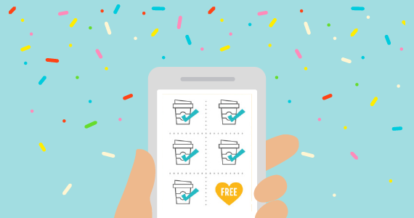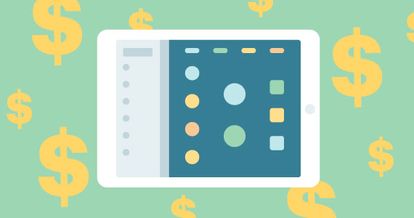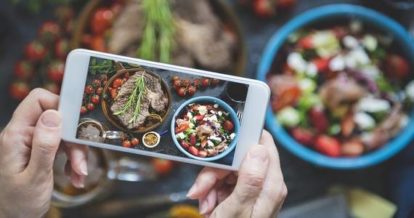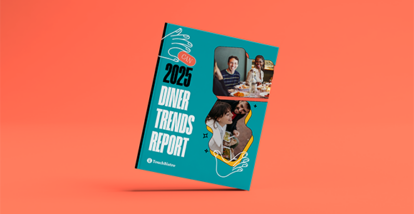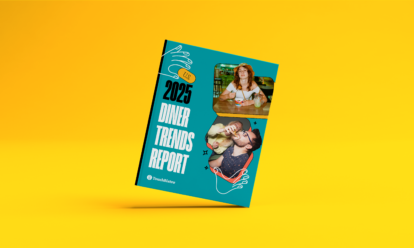If you’ve been on the fence about using a restaurant loyalty program in your venue, now might be the time to finally make the leap.
In the past, you’ve likely relied on providing stellar customer service and a great ambiance to turn first-time customers into loyal regulars. But in the wake of the pandemic, customer retention has become a lot trickier. Between capacity limits and strict social distancing mandates, it’s become much harder for restaurants to charm customers into coming back again and again.
And for restaurants, this is a big problem. As data has shown, it not only costs more to acquire a new customer than to retain an existing one, but loyal customers also bring in more revenue. In fact, research by Frederick Reichheld of Bain & Company found that increasing customer retention rates by just 5% increases profits by 25% to 95%.
As most restaurants have realized, the few customers who are coming through the door (or ordering online) are more valuable than ever before and this is where loyalty programs come in. Loyalty programs give restaurateurs a unique opportunity to tap into customers’ behaviors, and tailor their service and offerings accordingly. And by giving customers more of what they want, restaurants can ensure their loyal patrons continue to support them through the pandemic (and beyond).
This is something that many big restaurant brands keyed into in the early days of the pandemic. For instance, Panera’s coffee subscription program has been wildly successful and helped the brand’s digital loyalty program, MyPanera, grow to more than 40 million members. Other chains such as Taco Bell, Wendy’s, and Starbucks have also given their loyalty programs an overhaul in a bid to hold on to their most loyal customers.
Even if you don’t have the budget to roll out a Panera or Starbucks-sized rewards program, a restaurant loyalty program – especially one that uses gamification techniques – can still be a valuable way to drive repeat business. In this article, we’ll explore the importance of loyalty programs by covering:
- What customer retention means for restaurants
- Why customer retention is so important
- How a restaurant loyalty program can help to drive repeat business
- 4 ways to get the most out of your loyalty program
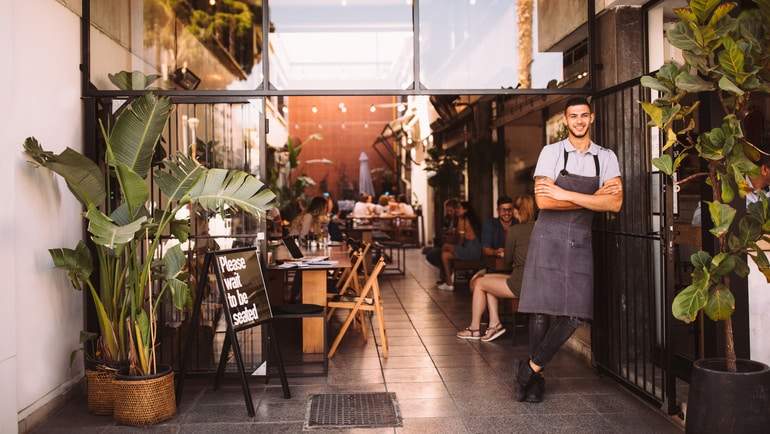
What Is Customer Retention?
Before diving into how a restaurant loyalty program can help you boost customer retention, it’s important to understand what customer retention actually means.
Customer retention refers to the activities and strategies you employ in your restaurant to increase the number of repeat customers, and to increase the profitability of each existing customer. In other words, it’s the actions you take to keep people coming back and to encourage them to spend more. You work hard to acquire each customer and restaurant customer retention strategies allow you to maximize the profitability of those loyal regulars.
Why Is Customer Retention Important for Restaurants?
While customer retention is important for any business, it’s especially important for restaurants.
Restaurants operate on notoriously thin profit margins, meaning you can’t afford to be spending thousands in marketing dollars just to acquire new customers every month.
In fact, it can be five to 25 times more expensive to acquire a new customer than it is to retain an existing one. For restaurateurs, focusing on customer retention is a much more cost-effective strategy than acquisition, which ultimately helps to keep profit margins healthy.
Returning customers are also valuable for restaurants because they frequently buy more often and spend more than newer customers. In fact, according to a study by BIA/Kelsey, a repeat customer spends up to 67% more than a new customer. For restaurants, this means that those repeat customers are essential to maximizing profitability.
But beyond the bottom line, keep in mind that restaurant customer retention is also important for your brand. Customer retention strategies aim to provide guests with a positive experience that will keep them coming back time and time again. In turn, satisfied guests are more likely to sing your restaurant’s praises to friends and family – an excellent form of word-of-mouth marketing. Those same customers may also leave ratings and reviews that can help to bolster your brand’s reputation and help you organically acquire new customers.
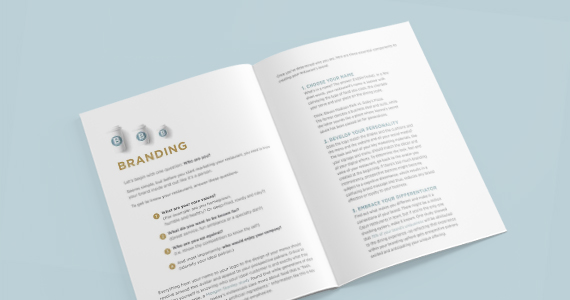
Everything you need to know about social media, digital marketing, SEO, and more!
How a Restaurant Loyalty Program Can Improve Customer Retention
Now that you know what customer retention is and why it’s so important for restaurants, it’s important to understand how restaurant loyalty programs play into all of this. And to understand why loyalty programs work, we need to cover three basic psychological factors (don’t worry, we’ll keep it simple!).
1) Motivation
One of the most powerful psychological factors behind any restaurant loyalty program is motivation. Motivation is the driving force that makes customers believe they can achieve something and pushes them to try and succeed.
For instance, when you offer loyalty points in exchange for completing certain actions, it motivates customers to stay engaged with your brand. And research backs this up, with 68% of customers saying they are “somewhat” or “very likely” to dine at restaurants that offer loyalty programs over those that don’t.
Just keep in mind that these rewards need to be frequent and attainable enough that customers will continue to feel motivated over time. If you require too much of customers to obtain each reward, you run the risk that they’ll lose their motivation entirely.
2) Positive Reinforcement
Of course, it’s not just about the idea of a goal, but also about the reward itself. With most loyalty programs, the points that the customer accumulates can be redeemed for rewards like free drinks or meals. And when you deliver on these rewards, you are positively reinforcing the customer’s behavior. While you shouldn’t be giving out freebies every visit, you want customers to receive rewards frequently enough that they’re encouraged to continue engaging with your restaurant in order to reap those benefits again and again.
3) Long-Term Investment
Over time, this rewarding experience helps to establish trust and a long-term commitment between your restaurant and the customer. The customer will continue returning to your restaurant versus other restaurants because they don’t want to give up the points they have accumulated over time (also known as a switching cost).
In fact, Paytronix has found that people who join loyalty programs visit restaurants 20% more often and spend 20% more than they would if they hadn’t joined. And of course, a long-term commitment to your loyalty program is essential for success.
Even if you’re not an expert in consumer behavior, it’s easy to see why loyalty programs are so successful in boosting restaurant customer retention.
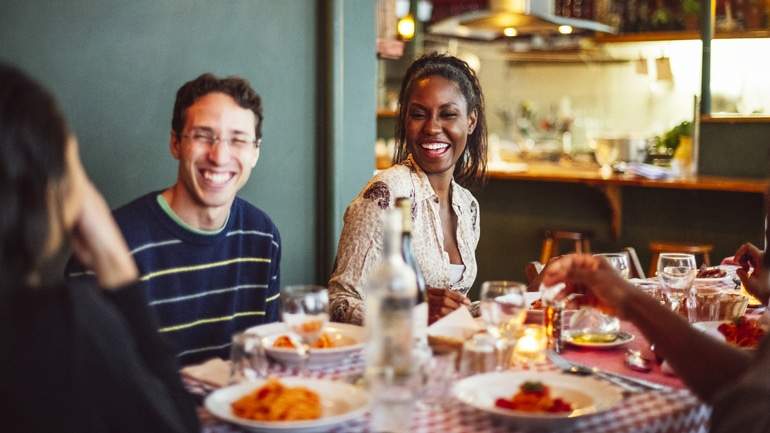
4 Ways to Use Your Loyalty Program to Drive Repeat Business
It’s one thing to know how a restaurant loyalty program works, but it’s another thing to actually use one in your restaurant. Unlike the physical punch cards of the past, today’s loyalty programs come with a wide range of features and functions, which can seem overwhelming upon first glance.
Fortunately, most modern loyalty programs integrate directly with your POS system, making it easier than ever to get started. Below, we’ll cover some of the ways you can use a POS-integrated restaurant loyalty program to drive repeat business.
1. Get to Know Your Customers
You probably already use your POS reports or even restaurant survey questions to draw insights about your business like what’s selling well or how your staff are performing. However, a restaurant loyalty program allows you to dive even deeper and gain a better understanding of what your customers actually want.
With TouchBistro Loyalty, there is a customer relationship management (CRM) tool that allows you to create detailed guest profiles for everyone that takes part in your Loyalty program. These holistic profiles combine behavioral data (such as the time of day a customer visits) with engagement data (such as dollars spent). You can then use the valuable customer information in your restaurant CRM to make business decisions that will motivate your customers to keep coming back.
For instance, if your loyalty data shows that your regulars seem to always purchase a breakfast sandwich alongside their morning coffee, you might start pairing those two items together as a combo. This is just one example of a data-driven loyalty program idea for restaurants.
2. Offer Enticing Rewards
As mentioned above, rewards are one of the key drivers of a restaurant loyalty program. However, the way you structure your restaurant reward program is entirely up to you.
While different loyalty programs will provide you with different options, two of the most popular earning structures are a points spend ratio and rewards based on number of purchases:
- Points Spend Ratio: A custom ratio of dollars spent to points earned. For example, 10 points earned could equal $1 in rewards.
- Purchases: Rewards are based on the customer making a certain number of purchases. For example, if the customer buys nine coffees, they could get the 10th one free.
These two reward structures are among the most popular for restaurants because they are simple, and simplicity is very important to customers.
As a poll by Software Advice found, 73% of customers consider the accumulation of points to be “very important” or “extremely important” in a restaurant loyalty program. These same customers citied the familiarity of a points system as the reason why they prefer this rewards structure.
In short, familiarity makes adoption of your program simple and when a program is simple, it’s more likely that customers will continue taking part.

3. Launch and Track Targeted Marketing Campaigns
Regardless of what type of rewards structure you use, you’ve got to make sure that your restaurant loyalty program stays top of mind if you want to increase customer retention. This is where targeted marketing campaigns come in.
Most loyalty programs work with marketing tools so you can get your message directly to customers. For instance, TouchBistro Loyalty integrates with TouchBistro Marketing, a marketing platform that allows you to design personalized loyalty program promotions and distribute them via email or in-app messaging. This means that if you’ve got a new happy hour special or you’re offering a discount on takeout, you can distribute that information directly to your audience.
And you don’t have to limit yourself to broad campaigns for discounts and savings. With most loyalty software, you can filter guests by criteria such as the number of visits or orders placed to create custom promotions for specific audiences. As a poll from Software Advice shows, these kinds of personalized rewards and relevant offers are “extremely important” or “very important” to more than 50% of customers.
In addition to helping you launch these kinds of targeted marketing campaigns, loyalty software can also help you track the success of your campaigns.
For example, let’s say you launched an email campaign promoting a two-for-one special on burgers and targeted all the customers who have purchased burgers in the past month. You can then use your loyalty software to see how many of those customers actually came in to take advantage of the promotion. And based on the results of the campaign, you can get a better idea of what works and how to optimize for future success.
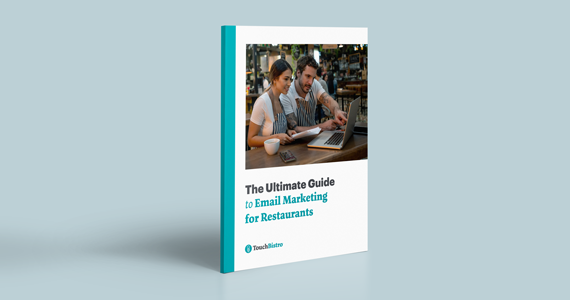
Learn how to set up an email marketing strategy for your business in 6 easy steps.
4. Create a Custom Web App
Beyond enticing rewards and targeted marketing campaigns, another way to boost customer retention through loyalty is by offering a web-based restaurant app for your rewards program.
Today’s customers expect to be able to access important information online and over 70% say that the ability to redeem their rewards on digital and mobile platforms is “important,” “very important,” or “extremely important” to them. These contactless online experiences are more important than ever before, as some customers now prefer interacting with restaurants digitally through channels such as online ordering, instead of in-person.
Fortunately, with software like TouchBistro Loyalty, you have the ability to create your own Customer Web App that can be utilized for your restaurant’s loyalty program. A custom-branded web app makes engaging with your loyalty program easy and convenient for customers by enabling them to create loyalty accounts, and earn and redeem rewards – all from their own device.
Customers can also use your Customer Web App to purchase (and send) digital gift cards for your restaurant without having to leave the house. Customers can even use these digital gift cards to pay for orders directly with their phones.
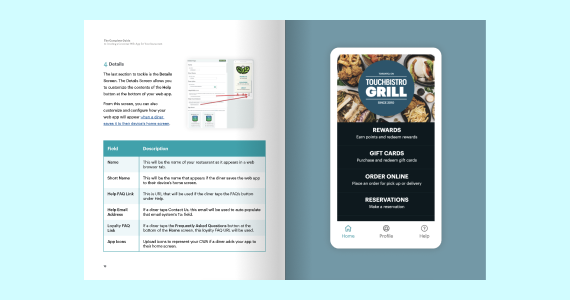
Download our illustrated guide to setting up and customizing your TouchBistro Customer Web App.
Prior to the pandemic, it was easy for most restaurateurs to view a restaurant loyalty program as more of a “nice-to-have” than a “must-have.” But since the pandemic has upended the traditional restaurant business model, POS-integrated loyalty programs have become essential to boosting restaurant customer retention.
Now more than ever before, you need to keep your regulars engaged and loyalty programs are a great way to not only keep these customers coming back again and again, but also to get them spending more.
Free Restaurant Cleaning Checklist
Sign up for our free weekly TouchBistro Newsletter

